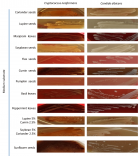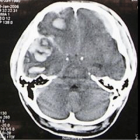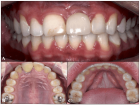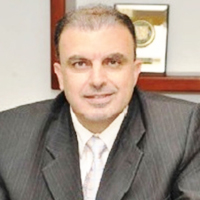Abstract
Research Article
Receptor pharmacology and other relevant factors in lower urinary tract pathology under a functional and toxicological approach: Instrument to better manage antimicrobials therapy
Mauro Luisetto*, Naseer Almukhtar, Behzad Nili-Ahmadabadi, Ghulam Rasool Mashori, Kausar Rehman Khan, Ram Kumar Sahu, Farhan Ahmad Khan, Gamal Abdul Hamid and Luca Cabianca
Published: 14 December, 2018 | Volume 2 - Issue 1 | Pages: 049-093
In various patients conditions involved in lower urinary tract disease LUT (like overactive bladder, bladder neck sclerosis, dis –synergy (with our synenrgic contraction between bladder detrusor and bladder neck, BPH, recurrent cysytitis, interstitial cystitis, chronic prostatitis, uretral stenosys, loss of sfinteric coordination.
Prostatic cancer, anatomic abnormalities and other the receptor status play relevant role to reduce effect of vicious clycle that can be responsible in progression of the pathologic process.
In this work the complex receptorial status is analyzed to verify new therapeutic strategies.
Starting from the observation that various irritant substanties produce irritant stimulus in Prostatic Patients or in bladder neck condition is interesting to deep understand the etio-patogenesys and Functional results.
In Various prostatic, bladder neck or ureteral condition a reduced urinary fluss can produce infectious.
Conditions like acute or chronic prostatitis.
Irritants sustanties in diet (in example etilic alcohol drink, hot spices, crud meats, carbonate drinks, caffeine and other) can produce Painful stimulus in innervations of vecical trigonous, bladder neck and prostatic urethra.
The same recurrent cystitis and Bph contribute in a complex situation.
This stimulus produce ipertonus of bladder muscle involved in the expulsion of urine.
The event related inflamation and edema (bladder, prostatic uretra, trigonus) contribute to the global effect.
So conditions like bladder neck sclerosys IPB, recurrent prostatitis and cistitys in acts in a vicious circle. (Also immunomediated: Bph and cronic prostatitis with linfocite infiltration and tissue remodeling).
The ormonal status check the systems (see 5-ARI efficacy in Bph).
Simpatic, parasimpatic and other system are deeply involved.
Also behavioral habits or diet can influence in example urinary flux in a complex system like LUT. (Bladder and prostatic irritants that can produce edema and acute inflamation).
Other behavior habits are deeply involved as too much sedentary, water intake, coffee, pee modality and also psychological profile and stressing conditions.
Some disease like diabetes produce high consequences in all this systems due to
Bladder modification, oxidative stress, osmotic movens, and increase susceptibility of urinary infections.
This article are verified this kind of movens that contribute in physio -pathology of some low urinary tract conditions.
The anatomic abnormalities produces, obviously, physiological disfuntions.
Recurrent urinary tract infections, inadequate antimicrobial therapy:
Profile of resistance, duration of therapy, kind of antimicrobials, posology,
Pk. Kinetics, associations, compliance, biofilms, micro calcifications (recurrent chronic prostatitis) contribute to a progression of the condition.
Read Full Article HTML DOI: 10.29328/journal.apcr.1001010 Cite this Article Read Full Article PDF
Keywords:
Lower urinary tract disease; Pharmacology; Receptors, Physio-pathology; BPH; Emorragic cystitis
References
- Kogan P, Xu S, Wang Y, O'Donnell MA, Lutgendorf SK, et al. Sub-noxious Intravesical Lipopolysaccharide Triggers Bladder Inflammation and Symptom Onset in a Transgenic Autoimmune Cystitis Model: A MAPP Network Animal Study. Sci Rep. 2018; 8: 6573. Ref.: https://goo.gl/uc6w7B
- Fiander N. Painful bladder syndrome and interstitial cystitis: treatment options. Br J Nurs. 2013; 22: S26, S28-33. Ref.: https://goo.gl/Wue6qf
- Wyman JF, Burgio KL, Newman DK. Practical aspects of lifestyle modifications and behavioural interventions in the treatment of overactive bladder and urgency urinary incontinence. Int J Clin Pract. 2009; 63: 1177-1191. Ref.: https://goo.gl/gce1LC
- Kaddumi EG, Hubscher CH. Urinary bladder irritation alters efficacy of vagal stimulation on rostral medullary neurons in chronic T8 spinalized rats. J Neurotrauma. 2007; 24: 1219-1228. Ref.: https://goo.gl/L2kpQZ
- Shorter B, Lesser M, Moldwin RM, Kushner L. Effect of comestibles on symptoms of interstitial cystitis. J Urol. 2007; 178: 145-152. Ref.: https://goo.gl/zM5Gbd
- Ellenbroek JH, Arioglu Inan E, Michel MC. A systematic review of urinary bladder hypertrophy in experimental diabetes: Part 2. Comparison of animal models and functional consequences. Neurourol Urodyn. 2018; 37: 2346-2360. Ref.: https://goo.gl/zLpvBQ
- Tong YC, Chin WT, Cheng JT. Role of sorbitol in the up-regulation of urinary bladder M(2) muscarinic receptors in streptozotocin-induced diabetic rats. Neurourol Urodyn. 2002; 21: 154-159. Ref.: https://goo.gl/scNz9y
- Liu BK, Jin XW, Lu HZ, Zhang X, Zhao ZH, Shao Y. The Effects of Neurokinin-1 Receptor Antagonist in an Experimental Autoimmune Cystitis Model Resembling Bladder Pain Syndrome/Interstitial Cystitis. Inflammation. 2018; Ref.: https://goo.gl/gd9FwX
- Butler DSC, Ambite I, Nagy K, Cafaro C, Ahmed A, et al. Neuroepithelial control of mucosal inflammation in acute cystitis. Sci Rep. 2018; 8: 11015. Ref.: https://goo.gl/pwf13G
- Tourret J, Bagnis CI, Denamur E. [Urinary tract infections in diabetic patients]. Rev Prat. 2014; 64: 980-983. Ref.: https://goo.gl/qWFXRy
- Ross MA. Neuropathies associated with diabetes. Med Clin North Am. 1993; 77: 111-124. Ref.: https://goo.gl/QzNBgL
- Hanna-Mitchell AT, Ruiz GW, Daneshgari F, Liu G, Apodaca G. Impact of diabetes mellitus on bladder uroepithelial cells. Am J Physiol Regul Integr Comp Physiol. 2013; 304: R84–R93. Ref.: https://goo.gl/26o3bQ
- Birder L, de Groat W, Mills I, Morrison J, Thor K, et al. Neural Control of the Lower Urinary Tract: Peripheral and Spinal Mechanisms. Neurourol Urodyn. 2010; 29: 128–139. Ref.: https://goo.gl/zdoDU8
- Thor KB, Katofiasc MA, Danuser H, Springer J, Schaus JM. The role of 5-HT(1A) receptors in control of lower urinary tract function in cats. Brain Res. 2002; 946: 290-297. Ref.: https://goo.gl/DWxnss
- luisetto M, Nili-Ahmadabadi N, Mashori GR, Sahu RK, Khan FA, et al. Immunitary role in chronic prostatitis and growth factors as promoter of BPH. Insights Clin Cell Immunol. 2018; 2: 001-013. Ref.: https://goo.gl/qfA1RL
- Luisetto M, Nili-Ahmadabadi B. Chronic Prostatitis: The Clinical Pharmacist Role and New Delivery Systems. J Bioanal Biomed 9:e151. Ref.: https://goo.gl/dnsWrA
- Luisetto M, Behzad NA, Ghulam RM. Relapses and Recurrent Chronic Bacteric Prostatitis - Biofilm Related, A Case Report. J of Pharmacol & Clin Res. 2017; 4: 555644. Ref.: https://goo.gl/LkQzu8
- Xue ZNK. Xu Z, Jia RP. [PDE5: A new therapeutic target for lower urinary tract symptoms/ benign prostatic hyperplasia combined with erectile dysfunction]. 2018; 24: 355-359. Ref.: https://goo.gl/88HQV9
- Magri V, Marras E, Restelli A, Wagenlehner FM, Perletti G. Multimodal therapy for category III chronic prostatitis/chronic pelvic pain syndrome in UPOINTS phenotyped patients. Exp Ther Med. 2015; 9: 658-666. Ref.: https://goo.gl/fRnfjJ
- Ozaki T, Matsuoka J, Tsubota M, Tomita S, Sekiguchi F, et al. Zinc deficiency promotes cystitis-related bladder pain by enhancing function and expression of Cav3.2 in mice. Toxicology. 2018; 393: 102-112. Ref.: https://goo.gl/ixt1BZ
- Lovick TA. Central control of visceral pain and urinary tract function. Auton Neurosci. 2016; 200: 35-42. Ref.: https://goo.gl/Lc1ugW
- Tonon L, Fromont G, Boyault S, Thomas E, Ferrari A, et al. Mutational Profile of Aggressive, Localised Prostate Cancer from African Caribbean Men Versus European Ancestry Men. Eur Urol. 2018; pii: S0302-2838(18)30618-3. Ref.: https://goo.gl/qGUQRA
- Daneshgari F, Liu G, Birder L, Hanna-Mitchell AT, Chacko S. Diabetic Bladder Dysfunction: Current Translational Knowledge. J Urol. 2009; 182: S18–S26. Ref.: https://goo.gl/jU4zfF
- Montalbetti N, Rued AC, Taiclet SN, Birder LA, Kullmann FA, et al. Urothelial Tight Junction Barrier Dysfunction Sensitizes Bladder Afferents. eNeuro. 2017; 4. pii: ENEURO.0381-16.2017. Ref.: https://goo.gl/HnQFRp
- Nicholson HL, Al-Hakeem Y, Maldonado JJ, Tse V. Management of bladder neck stenosis and urethral stricture and stenosis following treatment for prostate cancer. Transl Androl Urol. 2017; 6(Suppl 2): S92–S102. Ref.: https://goo.gl/49P9tR
- Zhao Z, Zhang J, He J, Zeng G. Clinical utility of the UPOINT phenotype system in Chinese males with chronic prostatitis/chronic pelvic pain syndrome (CP/CPPS): a prospective study. PLoS One. 2013; 8: e52044 Ref.: https://goo.gl/d8g6SE
- Kim HJ, Moon H, Sohng I, Lee HW, Lee G, Lee JG. Effects of ethanol and its metabolite acetaldehyde on responses of the rat bladder. BJU Int. 1999; 83: 686-692. Ref.: https://goo.gl/VGsojr
- Magistro G, Wagenlehner FM, Grabe M, Weidner W, Stief CG, et al. Contemporary Management of Chronic Prostatitis/Chronic Pelvic Pain Syndrome. Eur Urol. 2016; 69: 286-297 Ref.: https://goo.gl/QHExzx
- Bayrak O, Erturhan S, Seckiner I, Erbagci A, Ustun A, et al. Chemical cystitis developed in experimental animals model: Topical effect of intravesical ozone application to bladder. Urol Ann. 2014; 6:122-126. Ref.: https://goo.gl/HJ7uiz
- Haldar S, Dru C, Bhowmick NA. Mechanisms of hemorrhagic cystitis. Am J Clin Exp Urol. 2014; 2: 199–208. Ref.: https://goo.gl/V4F4ch
- Golbidi S, Laher I. Bladder Dysfunction in Diabetes Mellitus. Front Pharmacol. 2010; 1: 136. Ref.: https://goo.gl/QMAUx5
- Nitti VW. Primary Bladder Neck Obstruction in Men and Women. Rev Urol. 2005; 7(Suppl 8): S12–S17. Ref.: https://goo.gl/erKX5U
- Chen C, Zeng M, Xue R, Wang G, Gao Z, et al. [Causes and management for male urethral stricture]. 2018; 43: 520-527. Ref.: https://goo.gl/q3ZRCw
- van Rij S, Gilling P. Recent advances in treatment for Benign Prostatic Hyperplasia. Version 1. F1000Res. 2015; 4: F1000 1482. Ref.: https://goo.gl/Sg51ss
- Khan RN, Zaidi SZ. Comparison of position-related changes on uroflowmetric parameters in healthy young men. J Pak Med Assoc. 2017; 67: 839-842. Ref.: https://goo.gl/MXjjWf
- Gravas S, Samarinas M, Zacharouli K, Karatzas A, Tzortzis V, et al. The effect of hexanic extract of Serenoa repens on prostatic inflammation: results from a randomized biopsy study. World J Urol. 2018; Ref.: https://goo.gl/tjHXRF
- Morelli A, Sarchielli E, Comeglio P, Filippi S, Mancina R, et al. Phosphodiesterase type 5 expression in human and rat lower urinary tract tissues and the effect of tadalafil on prostate gland oxygenation in spontaneously hypertensive rats. J Sex Med. 2011; 8: 2746-2760. Ref.: https://goo.gl/7A6PYY
- Fibbi B, Morelli A, Vignozzi L, Filippi S, Chavalmane A, et al. Characterization of phosphodiesterase type 5 expression and functional activity in the human male lower urinary tract. J Sex Med. 2010; 7(1 Pt 1): 59-69. Ref.: https://goo.gl/i5bhjC
- Krivoborodov GG, Shumilo DV, Basil'ev AV, Tur EI, Poddubnaia NV. [Botulinic toxin type a in combined treatment of males with chronic pelvic pain syndrome in combination with bladder emptying dysfunction]. Urologiia. 2011; 5: 67-72. Ref.: https://goo.gl/frFzff
- Zhanel GG, Zhanel MA, Karlowsky JA. Oral Fosfomycin for the Treatment of Acute and Chronic Bacterial Prostatitis Caused by Multidrug-Resistant Escherichia coli. Can J Infect Dis Med Microbiol. 2018; 2018: 1404813. Ref.: https://goo.gl/xxC1Jx
- Niemitz C. The evolution of the upright posture and gait—a review and a new synthesis. Naturwissenschaften. 2010; 97: 241–263. Ref.: https://goo.gl/Z7DTSS
- Kwon WA. Animal Model of Interstitial Cystitis/Bladder Pain Syndrome. Int Neurourol J. 2018 Jan; 22(Suppl 1): S1–2. Ref.: https://goo.gl/W2HYwx
- Lusty A, Kavaler E, Zakariasen K, Tolls V, Nickel JC. Treatment effectiveness in interstitial cystitis/bladder pain syndrome: Do patient perceptions align with efficacy-based guidelines? Can Urol Assoc J. 2018; 12: E1–E5. Ref.: https://goo.gl/2kvp2u
- Cvach K, Rosamilia A. Review of intravesical therapies for bladder pain syndrome/interstitial cystitis. Transl Androl Urol. 2015; 4: 629–637. Ref.: https://goo.gl/edK5Zi
- Jayasimha S. Nanotechnology in Urology. Indian J Urol. 2017; 33: 13–18. Ref.: https://goo.gl/Z4YvXC
- Zacchè MM, Srikrishna S, Cardozo L. Novel targeted bladder drug-delivery systems: a review. Res Rep Urol. 2015; 7: 169–178. Ref.: https://goo.gl/NeCvih
- Goel A, Kanodia G, Sokhal AK, Singh K, Agrawal M. et al. Evaluation of Impact of Voiding Posture on Uroflowmetry Parameters in Men. World J Mens Health 2017; 35: 100-106. Ref.: https://goo.gl/cGRi3f
- Ngai HY, Yuen KKS, Ng CM, Cheng CH, Chub SKP. Metabolic syndrome and benign prostatic hyperplasia: An update. Asian J Urol. 2017; 4: 164–173. Ref.: https://goo.gl/goe5c8
- Lee CL, Kuo HC. Pathophysiology of benign prostate enlargement and lower urinary tract symptoms: Current concepts. Ci Ji Yi Xue Za Zhi. 2017; 29: 79–83. Ref.: https://goo.gl/UaeCZX
- Bader MS, Loeb M, Brooks AA. An update on the management of urinary tract infections in the era of antimicrobial resistance. Postgrad Med. 2017; 129: 242-258. Ref.: https://goo.gl/9PpL1t
- Huang Z, Xiao H, Li H, Yan W, Ji Z. Analysis of the incidence and risk factors of male urinary tract infection following urodynamic study. Eur J Clin Microbiol Infect Dis. 2017; 36: 1873-1878. Ref.: https://goo.gl/FUkZkP
- Singh AV, Hosseinidoust Z, Park BW, Yasa O, Sitti M. Microemulsion-Based Soft Bacteria-Driven Microswimmers for Active Cargo Delivery. ACS Nano. 2017; 11: 9759-9769. Ref.: https://goo.gl/Ys9G62
- Singh AV, Khare M, Gade WN, Zamboni P. Theranostic implications of nanotechnology in multiple sclerosis: a future perspective. Autoimmune Diseases. 2012; 2012, Article ID 160830: 12. Ref.: https://goo.gl/H9xkyN
- Singh AV, Vyas V, Salve TS, Cortelli D, Dellasega D, et al. Biofilm formation on nanostructured titanium oxide surfaces and a micro/nanofabrication-based preventive strategy using colloidal lithography. Biofabrication. 2012; 4: 025001. Ref.: https://goo.gl/STBBWv
Figures:

Figure 1

Figure 2
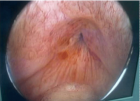
Figure 3

Figure 4

Figure 5
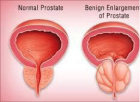
Figure 6
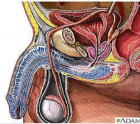
Figure 7

Figure 8

Figure 9

Figure 10

Figure 11

Figure 12

Figure 13
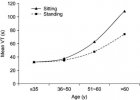
Figure 14
Similar Articles
-
Receptor pharmacology and other relevant factors in lower urinary tract pathology under a functional and toxicological approach: Instrument to better manage antimicrobials therapyMauro Luisetto*,Naseer Almukhtar,Behzad Nili-Ahmadabadi,Ghulam Rasool Mashori,Kausar Rehman Khan,Ram Kumar Sahu,Farhan Ahmad Khan,Gamal Abdul Hamid,Luca Cabianca. Receptor pharmacology and other relevant factors in lower urinary tract pathology under a functional and toxicological approach: Instrument to better manage antimicrobials therapy . . 2018 doi: 10.29328/journal.apcr.1001010; 2: 049-093
Recently Viewed
-
Clinical and Histopathological Mismatch: A Case Report of Acral FibromyxomaMonica Mishra*,Kailas Mulsange,Gunvanti Rathod,Deepthi Konda. Clinical and Histopathological Mismatch: A Case Report of Acral Fibromyxoma. Arch Pathol Clin Res. 2025: doi: 10.29328/journal.apcr.1001045; 9: 005-007
-
Unconventional powder method is a useful technique to determine the latent fingerprint impressionsHarshita Niranjan,Shweta Rai,Kapil Raikwar,Chanchal Kamle,Rakesh Mia*. Unconventional powder method is a useful technique to determine the latent fingerprint impressions. J Forensic Sci Res. 2022: doi: 10.29328/journal.jfsr.1001035; 6: 045-048
-
Doppler Evaluation of Renal Vessels in Pediatric Patients with Relapse and Remission in Different Categories of Nephrotic SyndromeAmit Nandan Dhar Dwivedi*, Srishti Sharma, OP Mishra, Girish Singh. Doppler Evaluation of Renal Vessels in Pediatric Patients with Relapse and Remission in Different Categories of Nephrotic Syndrome. J Clini Nephrol. 2023: doi: 10.29328/journal.jcn.1001112; 7: 067-072
-
Atlantoaxial subluxation in the pediatric patient: Case series and literature reviewCatherine A Mazzola*,Catherine Christie,Isabel A Snee,Hamail Iqbal. Atlantoaxial subluxation in the pediatric patient: Case series and literature review. J Neurosci Neurol Disord. 2020: doi: 10.29328/journal.jnnd.1001037; 4: 069-074
-
Intelligent Design of Ecological Furniture in Risk Areas based on Artificial SimulationTorres del Salto Rommy Adelfa*, Bryan Alfonso Colorado Pástor*. Intelligent Design of Ecological Furniture in Risk Areas based on Artificial Simulation. Arch Surg Clin Res. 2024: doi: 10.29328/journal.ascr.1001083; 8: 062-068
Most Viewed
-
Evaluation of Biostimulants Based on Recovered Protein Hydrolysates from Animal By-products as Plant Growth EnhancersH Pérez-Aguilar*, M Lacruz-Asaro, F Arán-Ais. Evaluation of Biostimulants Based on Recovered Protein Hydrolysates from Animal By-products as Plant Growth Enhancers. J Plant Sci Phytopathol. 2023 doi: 10.29328/journal.jpsp.1001104; 7: 042-047
-
Sinonasal Myxoma Extending into the Orbit in a 4-Year Old: A Case PresentationJulian A Purrinos*, Ramzi Younis. Sinonasal Myxoma Extending into the Orbit in a 4-Year Old: A Case Presentation. Arch Case Rep. 2024 doi: 10.29328/journal.acr.1001099; 8: 075-077
-
Feasibility study of magnetic sensing for detecting single-neuron action potentialsDenis Tonini,Kai Wu,Renata Saha,Jian-Ping Wang*. Feasibility study of magnetic sensing for detecting single-neuron action potentials. Ann Biomed Sci Eng. 2022 doi: 10.29328/journal.abse.1001018; 6: 019-029
-
Pediatric Dysgerminoma: Unveiling a Rare Ovarian TumorFaten Limaiem*, Khalil Saffar, Ahmed Halouani. Pediatric Dysgerminoma: Unveiling a Rare Ovarian Tumor. Arch Case Rep. 2024 doi: 10.29328/journal.acr.1001087; 8: 010-013
-
Physical activity can change the physiological and psychological circumstances during COVID-19 pandemic: A narrative reviewKhashayar Maroufi*. Physical activity can change the physiological and psychological circumstances during COVID-19 pandemic: A narrative review. J Sports Med Ther. 2021 doi: 10.29328/journal.jsmt.1001051; 6: 001-007

HSPI: We're glad you're here. Please click "create a new Query" if you are a new visitor to our website and need further information from us.
If you are already a member of our network and need to keep track of any developments regarding a question you have already submitted, click "take me to my Query."








